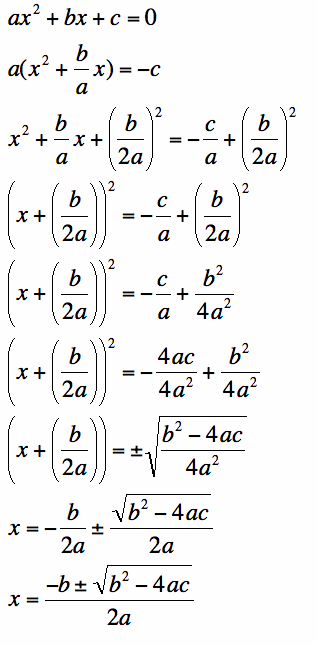

Assignment 2:
Exploring
![]()
by
Margo Gonterman
The general form of a quadratic equation is:
![]()
The vertex form of a quadratic equation is:
![]()
The factored form of a quadratic equation is:
![]()
This investigation will focus on how the parameters a, b, and c in general form change the shape and orientation of the parabola.
What happens to the parabola as a varies?
See the animation below to watch what happens as a varies from -3 to 3.
What happens to the parabola as b varies?
As b varies from -3 to 3, note that the vertex of the parabola seems to trace along a parabola that opens down.
In fact, the vertex traces along the reflection of the original parabola when b=0.
The reflection of the parabola given by ![]() is
is ![]() .
.
Below is an animation of a parabola in standard form as b varies from -5 to 5 overlaid with its reflection when b=0.
What happens to the parabola as c varies?
Derivation of Quadratic Equation
From the general form of a quadratic equation, it is possible to derive the quadratic formula used to solve equations of this type.
1. Start with the general form of a quadratic equation 2. Subtract c from both sides 3. Factor an a out of both terms on the left hand side 4. Complete the square on the left hand side by adding (b/2a)^2 to both sides 5. Expand (b/2a)^2 and get a common denominator on the right hand side 6. Take the square root of both sides of the equation (Don't forget the +/- !!) 7. Simplify the denominator of the right hand side 8. Subtract b/2a from both sides |
 |